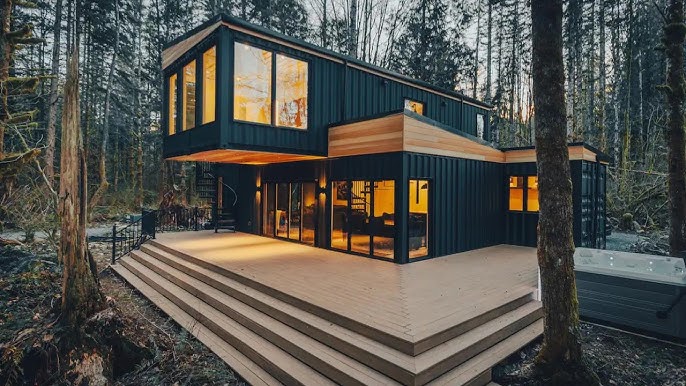
From Rusty Boxes to Dream Houses
Once upon a time, shipping containers were nothing more than giant steel boxes hauling goods across oceans. In 2025, they’ve become the hottest architectural trend on the planet.
Type “container homes 2025” into Google, and you’ll see everything from minimalist tiny houses tucked into forests to sprawling container mansions with infinity pools and rooftop gardens. What started as a cheap housing hack has exploded into a global luxury phenomenon.
Why Container Homes Are Taking Over
There are three big reasons this movement is booming:
-
Affordability — Even with construction costs, containers are cheaper than traditional building materials.
-
Sustainability — Recycling old steel giants is eco-friendly, cutting down on waste.
-
Design Freedom — Architects love containers because they’re modular, stackable, and endlessly customizable.
The result? Homes that are stylish, eco-conscious, and way more Instagrammable than your average McMansion.
From DIY Hackers to High-End Developers
At first, container homes were the domain of DIY dreamers welding boxes together in backyards. Now, real estate developers are cashing in.
Luxury projects in California, Australia, and Dubai are showcasing container builds with marble countertops, smart-home systems, and Tesla-charging garages. One recently sold in Malibu for over $3 million. Yes, a container house just outpriced most suburban mansions.
Inside a Million-Dollar Container Mansion
So what does a seven-figure container home actually look like? Forget cramped quarters. These builds sprawl across multiple stacked containers, opening into airy layouts with floor-to-ceiling glass walls.
Picture this: a four-bedroom home made from twelve containers, complete with:
-
An infinity pool overlooking the ocean.
-
A rooftop bar with fire pits.
-
Solar panels powering everything.
-
Interiors decked in Italian marble and reclaimed wood.
Not exactly your average “tiny house on wheels.”
The Celebrity Stamp of Approval
As with any trend, it didn’t hit full throttle until celebrities jumped on board. Musicians, actors, and Instagram influencers are proudly showcasing their sleek container pads. For stars, it’s not just about sustainability — it’s about standing out in a world where traditional mansions feel cliché.
When an A-list DJ in Ibiza throws a party in his neon-lit container villa? Suddenly, the whole world wants in.
The Eco-Luxury Appeal
2025 is the year when luxury meets eco-conscious living. Container homes symbolize that perfectly. You’re not just flaunting wealth — you’re flaunting values.
Think about it. What sounds cooler at a cocktail party? “I live in a ten-million-dollar mansion” or “I upcycled steel containers into a sustainable paradise”? The latter oozes modern prestige.
The Downsides Nobody Talks About
Of course, it’s not all rooftop gardens and viral Instagram reels. Container homes come with challenges:
-
Insulation issues — Steel boxes heat up like ovens and freeze like fridges.
-
Zoning laws — Not every city embraces non-traditional builds.
-
Durability concerns — Rust, mold, and structural quirks need serious attention.
Still, fans argue the pros far outweigh the cons. With modern insulation, engineering hacks, and growing demand, most problems have solutions.
Global Expansion
The trend isn’t just in the U.S. In 2025, container communities are popping up worldwide:
-
Amsterdam is building entire student housing blocks out of containers.
-
Kenya has eco-resorts made entirely from stacked shipping units.
-
Japan is experimenting with container skyscrapers for earthquake resilience.
It’s not just a fad. It’s a revolution in how we think about housing.
So, Cheap or Chic?
Here’s the twist: container homes started as a cheap alternative. Now they’re a status symbol. What began as frugality has morphed into luxury. It’s the same way streetwear went from budget necessity to multi-billion-dollar fashion empire.
In 2025, a container home isn’t just a house. It’s a statement — of sustainability, creativity, and yes, sometimes outrageous wealth.




